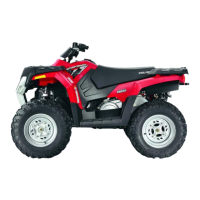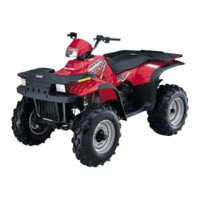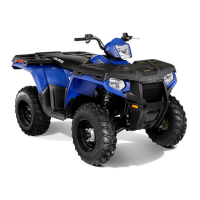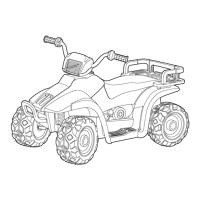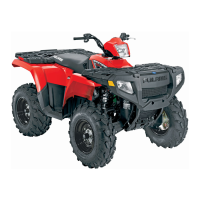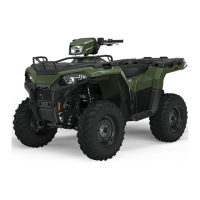BRAKES
9.4
HYDRAULIC BRAKE SYSTEM OPERATION
A
B
C
D
E
F
Must be clear to allow
proper diaphragm
movement
Compensating port compensates
for temperature changes by allowing
fluid back to master cylinder
Moveable
Brake Pad
G
Typical Hydraulic Brake System
The Polaris brake system consists of the following components or assemblies: brake lever; master cylinder; hy-
draulic hose; brake calipers (slave cylinder); brake pads; and brake discs, which are secured to the drive line.
Whenthehandactivatedbrakelever(A)isappliedit contacts a piston (B) withinthe mastercylinder. As the mas-
ter cylinder piston moves inward it closes a small opening (compensating port) (C) within the cylinder and starts
to buildpressurewithin the brakesystem. Asthe pressurewithin thesystem is increased, the piston(D)located
inthebrakecalipermovesoutwardandappliespressuretothemoveablebrakepad. Thispadcontactsthebrake
disc and moves the caliper in its floating bracket, pulling the stationary side padinto thebrake disc. Theresulting
friction reduces brake disc and vehicle speed. As the lever pressure is increased, the braking affect is also in-
creased.
Thefrictionappliedtothebrakepadswillcausethepadstowear. Asthesepadswear,thepistonwithin thecaliper
moves further outward andbecomesself adjusting. Fluidfrom thereservoir fills the additionalarea createdwhen
the caliper piston moves outward.
Brake fluid level is critical to proper system operation. Too little fluid will allow air to enter the system and cause
the brakes to feel spongy. Too much fluid could cause brakes to drag due to fluid expansion.
Locatedwithinthemastercylinderisthecompensatingport(C)whichisopenedandclosedbythemastercylinder
piston assembly. The port is open when the lever is released and the master cylinder piston is outward. As the
temperaturewithinthehydraulic system changes,thisport compensates forfluidexpansion(heatedfluid)orcon-
traction (cooled fluid). During system service, be sure this port is open. Due to the high temperatures created
withinthesystemduringheavybraking,itisveryimportantthatthemastercylinderreservoirhaveadequatespace
toallowfor fluidexpansion. Never overfill the reservoir! Fillto1/4″ -5/16″ (.64 -.80cm)fromtopof thecylinder .
This system also incorporates a diaphragm (E) as part of the cover gasket; and a vent port (F) located between
the gasket and the cover. The combination diaphragm and vent allow for the air above the fluid to equalize pres-
sure as the fluid expands or contracts. Make sure the vent is open and allowed to function. If the reservoir is
over filled or the diaphragm vent is plugged the expanding fluid may build pressure in the brake system leading
to brake failure.
When servicing Polaris ATV brake systems use only Polaris DOT 3 high temperature brake fluid (PN 2870990).
Polaris brake fluid is sold in 5.5 oz. bottles. WARNING: Once a bottle is opened, use what is necessary and
discard the rest in accordance with local laws. Do not store or use a partial bottle of brake fluid. Brake fluid is
hygroscopic, meaning it rapidly absorbs moisture. This causes the boiling temperature of the brake fluid to drop,
which can lead to early brake fade and the possibility of serious injury.
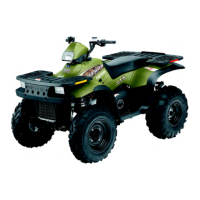
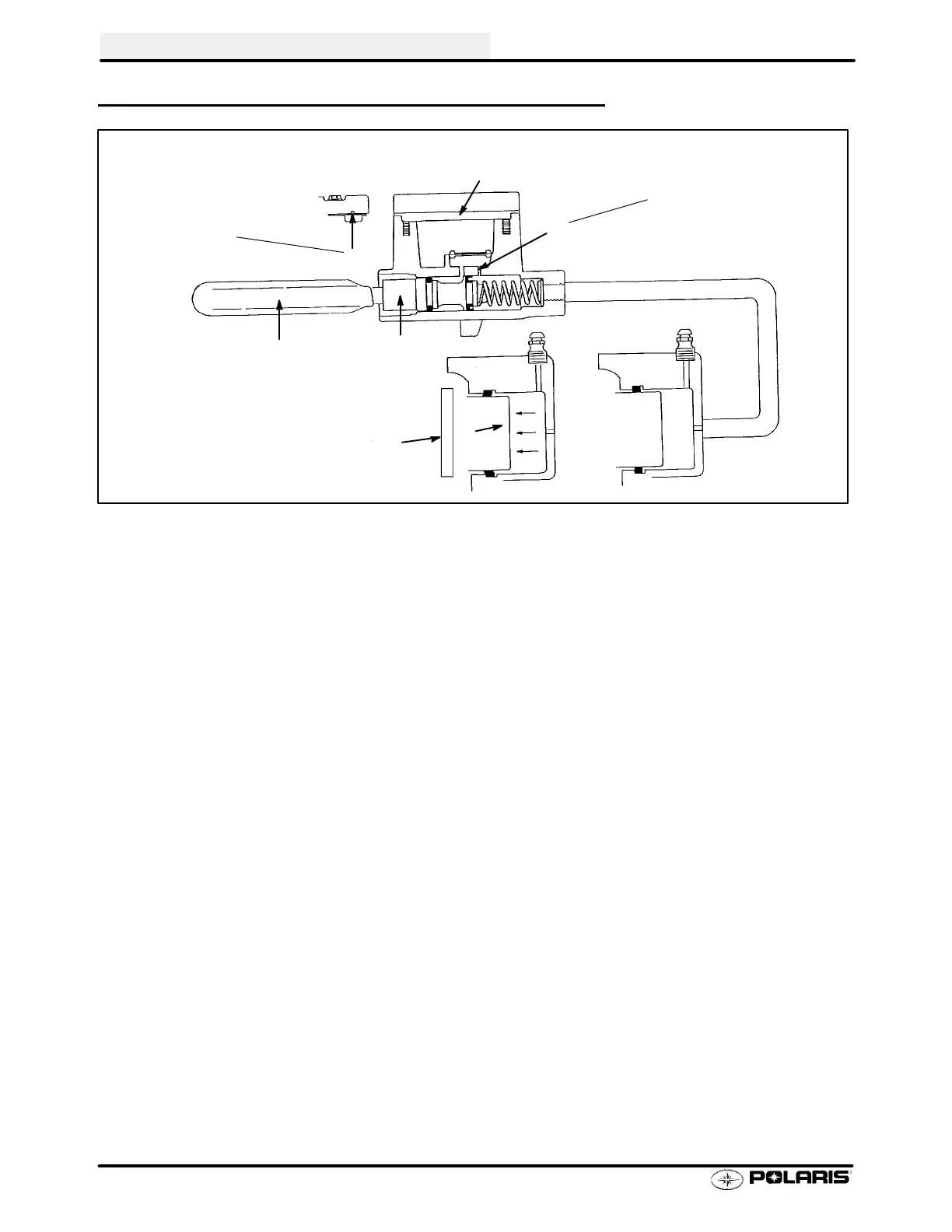